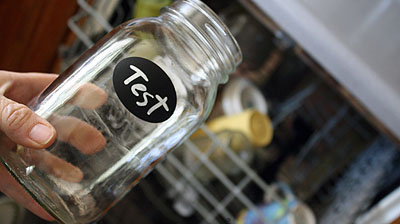The Next Step In Your Custom Label Journey
So, you’ve managed to successfully navigate the minefields of graphic design and label printing – now what? Obviously, the last step in the process is the act of applying the product labels to your packaging, which has been the goal all along. Sadly, this is another area that is full of pitfalls if you don’t treat it seriously or understand the challenges that can occur.
First, depending on what containers your product is going in, you may need to consider when and how you apply the product labels. For example, should you apply the labels before or after the container is filled? In many cases it won’t matter. But if you’re filling a bottle with a liquid product, for example, it’s very possible that spills or residue will end up on the bottle itself – and that can seriously affect the ability of the product label to properly adhere to the bottle surface.
Even the slightest residue on a container can cause problems during machine or manual label application.
It’s critical that labels be applied to a clean surface. So be very careful in making sure the containers are properly cleaned and free of any contamination. The materials we print on all have professional-grade adhesives designed specifically for product labels, so in most cases there should be no problem with having the labels stick properly. We occasionally have customers suggesting there must be some problem with the material, only to find that their containers are dirty or they’re not applying the labels properly – so please make sure the environment and products are in a clean state before beginning.
Second, it’s important to understand that the temperature of the product container can also affect adhesion. For example, if your product is still hot when you fill the containers, that heat will probably make the container surface hot as well – which could easily have an adverse effect on the label adhesive’s ability to bond with the surface. Always apply labels to surfaces that are within normal operating temperatures (e.g. room temperature) – even if that means leaving the products to cool before attempting to put the custom labels on. Similarly, don’t apply product labels to products that are already frozen – apply them first and then freeze the products. Note: There are certainly special adhesives designed for application to already-frozen surfaces, but they’re very rarely used and at Wizard Labels we don’t see enough demand to carry them.
Our Product Label Sampler
If you have any doubts about your packaging being suited to a particular material or adhesive, take advantage of our free Sample Pack simply fill out our request product label samples form – which are properly printed labels on the various materials we carry. If the chosen sample doesn’t seem to apply properly to your product (and equally importantly stay in place), it’s a reasonable sign that you may need extra help in finding out why – which we’re always happy to provide.

Always test a desired label on your chosen product package.
The last piece of the label application puzzle is the “method” used. This is quite simple in concept, as there are only two options – manual label application and using a label applicator machine. Many of our customers apply custom printed labels by hand (particularly when starting out), but many find that process too tedious and time-consuming so they move to a label applicator machine. That topic could provide enough fodder for a complete document all of its own, so we won’t go into detail here – suffice to say that there are many commercially-available devices to make custom label application less challenging. We can offer some suggestions on request, but in many cases the solution will come down to cost and volume – and how many weekends you want to spend watching TV with products in your lap and a roll of labels on the coffee table.

Keep in mind that regardless of the application method, the same basic rules of cleanliness and temperature still apply. Don’t rush it or you’ll end up doing it again – and that’s no fun at all.